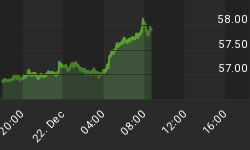An emergency easing by the Bank of Japan may have backfired overnight as the Yen erased its early losses against the major currencies. The BoJ made the move in the hopes it would weaken the Japanese Yen, but instead it's been business as usual this morning with the Yen sharply higher versus the U.S. Dollar.
Late this morning the BoJ said it would expand its current 20 trillion Yen quantitative easing program to six-months from its current three-month time frame. It also increased the amount of funds available by 10 trillion Yen.
The moves expressed by traders this morning seem to indicate that the trading public perceives the activity by the BoJ as too little, too late as the action suggests the central back is being reactive instead of proactive.
Technically, after an attempt to breakout to the upside through the last swing top at 85.91, the USD JPY is now trading sharply lower. The last main bottom at 83.59 seems safe at this time, but could be challenged later in the day if 84.75 cannot hold today's break.
U.S. equity markets are expected to open flat to lower this morning after an earlier rally fizzled. Friday's reversal bottom following a successful test of 1037.00 in the September E-mini S&P 500 was a strong sign that the market liked Bernanke's comments on Friday. Today investors will have to decide whether traders were buying value or just producing an oversold technical bounce. Should the rally regain steam today, look for the September E-mini S&P make a run at 1082.25.
The threat of another hurricane later this week combined with a pick-up in demand for higher risk helped drive December Crude Oil higher last week. Last night the market had a bit of a follow-through but it weakened just short of a major 50% price level at 78.41. With the main trend down, look for traders to sell the rally into this retracement level.
Technical factors, slow demand and building inventories are likely to pressure crude oil throughout the week. The only surprise will be the hurricane. Traders will react throughout the week depending on which direction the hurricane decides to take.
Treasury Bonds Posts Rare Combo Reversal
December Treasury Bonds posted the rare daily/weekly closing price reversal top last week. Last Wednesday, the T-Bonds formed a daily closing price reversal top and on Friday, the market sold off far enough to form a weekly closing price reversal top. Both of these chart patterns suggest that the selling is greater than the buying at current levels.
On August 25 the T-Bonds topped at the same time the equity markets bottomed shortly after the release of bearish U.S. new home sales. The simultaneous move in these markets had the appearance of an asset allocation shift. Either someone guessed right about Bernanke's speech or they were tipped off.
On August 27, Fed Chairman Bernanke sounded a little more upbeat about the economy, triggering a strong rally in the equity markets and a hard, profit-taking break in the T-Bonds. Based on the chart patterns, these moves should continue this week. Although it is a technically a "holiday week" what better time to drive equities higher and Treasury instruments lower than during an historically low volume week.
Technically, the daily chart suggests that the December Treasury Bond market is likely to break into a retracement zone at 130'17 to 129'11. The weekly chart indicates the start of perhaps an even greater break, but let's deal with one pattern at a time.
Although it is a holiday week, volatility should be high especially during the beginning of the week. After a mid-week slowdown, look for volatility to increase again on Friday when the August U.S. Non-Farm Payrolls report is released.















